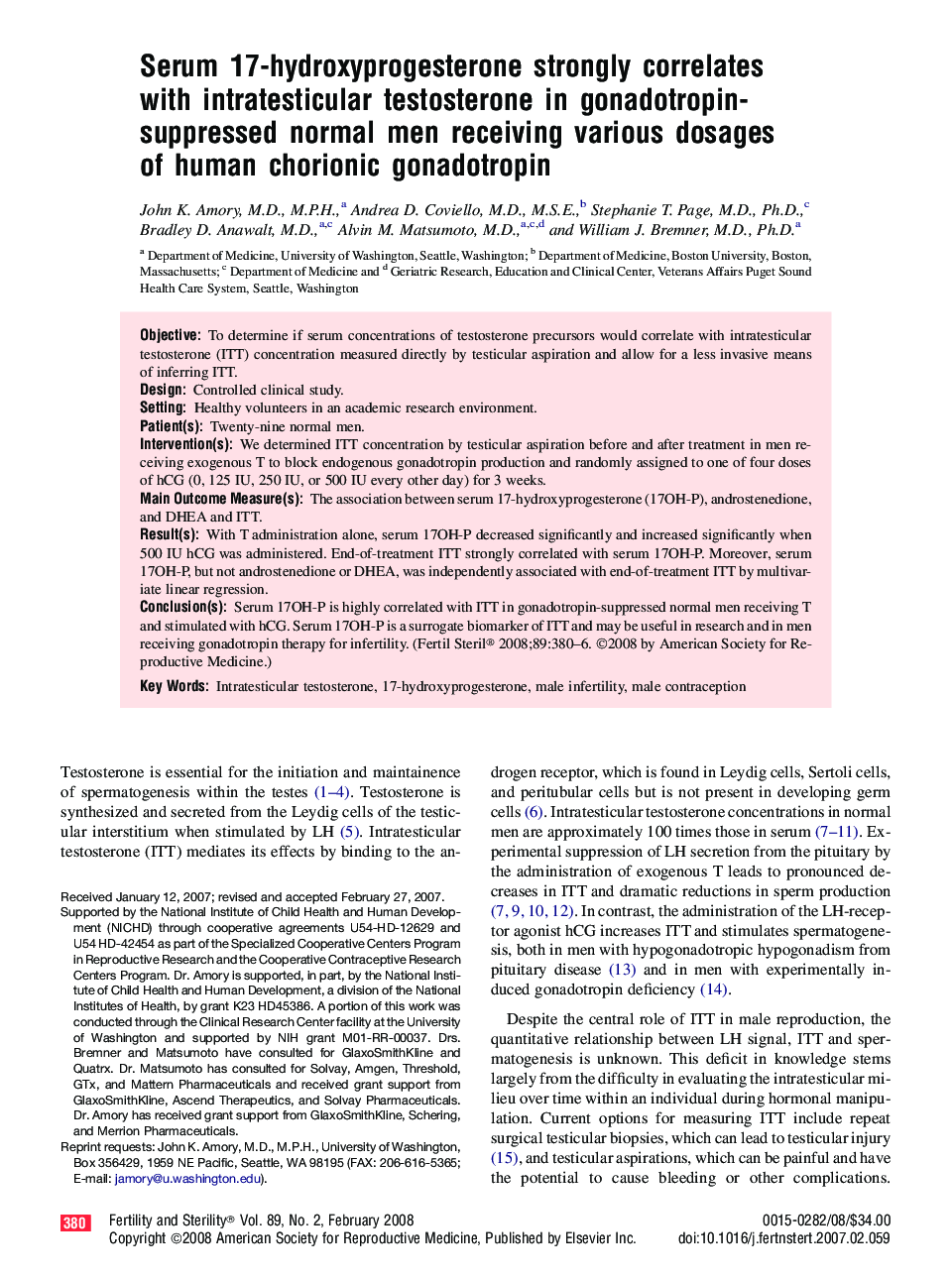| Article ID | Journal | Published Year | Pages | File Type |
|---|---|---|---|---|
| 3939424 | Fertility and Sterility | 2008 | 7 Pages |
ObjectiveTo determine if serum concentrations of testosterone precursors would correlate with intratesticular testosterone (ITT) concentration measured directly by testicular aspiration and allow for a less invasive means of inferring ITT.DesignControlled clinical study.SettingHealthy volunteers in an academic research environment.Patient(s)Twenty-nine normal men.Intervention(s)We determined ITT concentration by testicular aspiration before and after treatment in men receiving exogenous T to block endogenous gonadotropin production and randomly assigned to one of four doses of hCG (0, 125 IU, 250 IU, or 500 IU every other day) for 3 weeks.Main Outcome Measure(s)The association between serum 17-hydroxyprogesterone (17OH-P), androstenedione, and DHEA and ITT.Result(s)With T administration alone, serum 17OH-P decreased significantly and increased significantly when 500 IU hCG was administered. End-of-treatment ITT strongly correlated with serum 17OH-P. Moreover, serum 17OH-P, but not androstenedione or DHEA, was independently associated with end-of-treatment ITT by multivariate linear regression.Conclusion(s)Serum 17OH-P is highly correlated with ITT in gonadotropin-suppressed normal men receiving T and stimulated with hCG. Serum 17OH-P is a surrogate biomarker of ITT and may be useful in research and in men receiving gonadotropin therapy for infertility.
